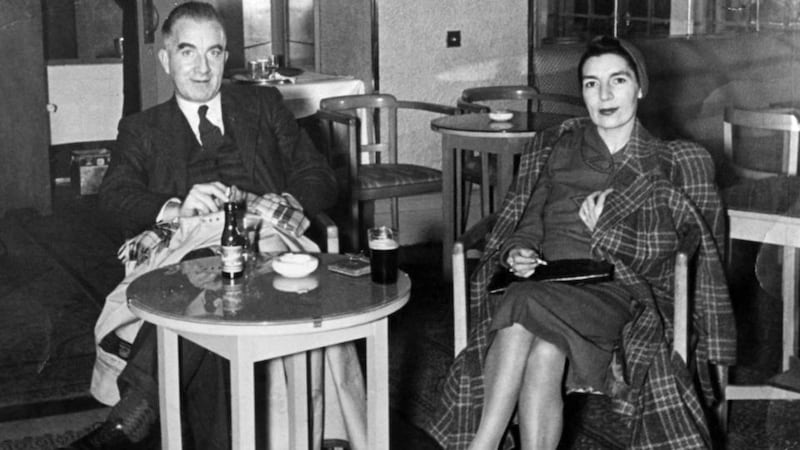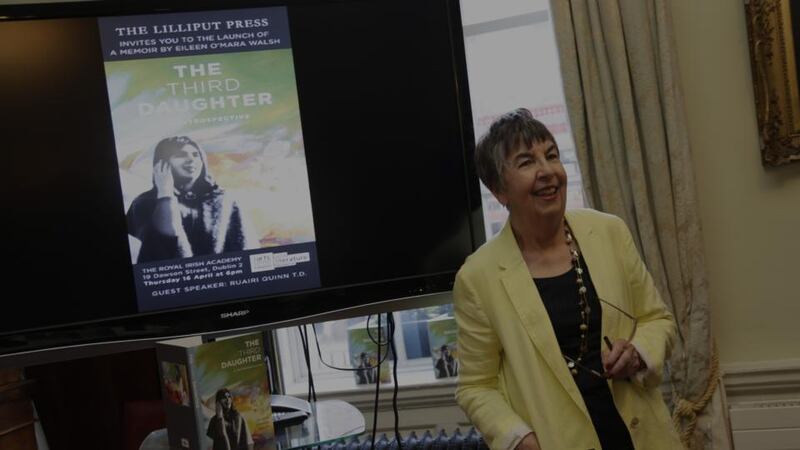“But now I must go back and explore. My parents, my family scattered over time and place, have become my biographical subjects as I search for something of me in them, and them in me.”
So wrote Michael Holroyd at the beginning of his family story, Basil Street Blues, and I read the words with an instant flash of recognition. I had been driven to write The Third Daughter by a chance encounter with a couple then in their late eighties. They had known my parents in the years before the fall in our family fortunes that had brought us from middle-class comfort in the Confraternity City of Limerick to genteel poverty in Dublin’s Georgian flatland among the writers and artists of the 1950s and ’60s.
Their affectionate recollections of my father as a charmer, bon viveur, the heart and soul of every gathering, both intrigued and saddened me. It was not the gentle, diffident rather vague figure of my early memories. Over the weeks that followed a niggle became an ache and the ache became an irresistible itch to solve the mysteries and silences that had shadowed my childhood and trace the route that took a War of Independence exile, son of an opera singer, to meet and marry a English socialist, erstwhile lover of Bertrand Russell. I would delve into my memories of childhood in Limerick and adolescence in Dublin when Patrick Kavanagh paid my bus fare home and my mother scolded Brendan Behan for putting his boots up on the kitchen table.


That was why I began The Third Daughter in 2011 but it is not why I persevered beyond the reach of those spectral family figures and found the script of my own life taking over centre stage and, as Holroyd said, “charting my evolution into someone who would never have been recognised by myself when young”. There was something surreal about my 70-year-old self discovering her 20-year-old predecessor. She emerged mistily like an illusion, an imagined being unconnected to anyone I knew, or like a friend I had long lost touch with, not at all sure I wanted to renew the acquaintance. But the more I wrote the more real she became and it was I, her future, who faded and became spectral in turn.
The family memoir I thought I was going to write, like poor Alice in Through The Looking Glass, curiously changed form as I went along. The family history went smoothly enough, often sadly as my parents’ mismatched lives intertwined, then broke apart, then limped along into anonymous old age and indifferent death. It was the diaries and letters I had squirreled away that swam into chaotic life as I transcribed them to the computer with the intention of jogging my memory for the dates and events of my young adulthood. Once there they refused to be gainsaid. It was my life in real time, impossible to contradict or gloss over with a more comfortable and convenient 21st-century air brush. This 70- year-old writer could only squirm occasionally and blush quite often as she recorded the words of the young woman who airily dismissed the Kennedy visit as an intrusion on more important events:
June 26 1963: Mairead has had twin girls! I had to battle my way through the crowds in O’Connell Street to the Rotunda. Caught a glimpse of Kennedy standing up in the limo – very tanned – never thought he had red, certainly reddish, hair. Mairead looking terrific but nervy heard the whole history of the labour.
In similar fashion the 1964 diary referred baldly, if not callously, to the last weeks of Brendan Behan’s life:
January 27 Owen rang. Met him in McDaids at lunchtime, he brought me to the Bailey for lunch. Behan clan all there. Brendan in awful condition. Spent evening with Sheridans. Nice to see them again, must go out more often.
March 20 Behan died. Worked all day.
March 23 Brendan Behan was buried today. I met M. in McDaids at 6.30 and found a wake going on, got a bit jarred and a bit bored.
Most of all the diaries were a record of a love story, a mirror of De La Rochefoucauld's maxim: "Entre deux amants il y a un qui aime et un qui se laisse aimer". Had I ever been that 23- year-old girl who stayed in a relationship made up more of pain than pleasure for more than a dozen years? I was and I did until love turned into friendship that lasted for another 25 years.
The Third Daughter soon became, like Joanne Woodward in The Three Faces of Eve, a study of multiple personality. First the family, the Limerick of my childhood, the Dublin of my adolescence, then the years of my twenties and thirties, coinciding with the 60s and 70s, when passion and pain were the twin pillars of my life. The birth of a son in the mid-seventies became the catalyst which switched tracks and sent us both towards more peaceful if prosaic horizons. The death of a dear sister in 1979 was another watershed, the ultimate divide between past and future. I wrote the final words: “I have been peeping back into my looking glass world. It is time to stop, far enough away to wave, too far away to be heard.”
But the end had not yet come, another chapter, another persona was added under some duress. I had resisted urgings from the only two people I had trusted sufficiently to read the completed text to carry the story on to my professional life covering the 1980s and ’90s. Boring business, I replied – who would be interested in that? When Lilliput Press intimated a willingness to publish The Third Daughter I was alternately delighted and fearful. Its genial owner, Anthony Farrell, was warm but firm in his opinion that the work as presented was incomplete and lacked a satisfying conclusion. Moreover what I discarded as “boring business” had a story of its own to tell, the early days of women in Irish business life. With as good a grace as I could muster I spent the summer of 2014 writing about the 20 years I spent running my own and other people’s businesses. It was odd to meet myself on more familiar and contemporaneous ground and I found the exercise strangely relaxing insofar as I treated the world of commerce with a light heart while poking a bit of gentle fun at some of the political big beasts of the era.
And thus The Third Daughter has come almost full circle; my life conceived in the London Blitz in 1940 has reached another watershed as I enter my 75th year in Dublin 2015. The itch, however, is still there. Now I realise it has been lurking around for years, through the letters, diaries and notebooks in which I found rich pickings for this memoir. It is simply the urge to write.
















